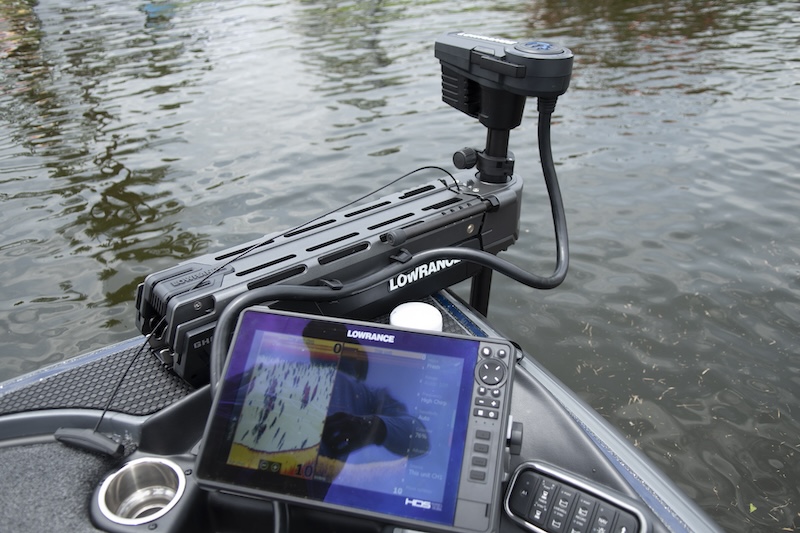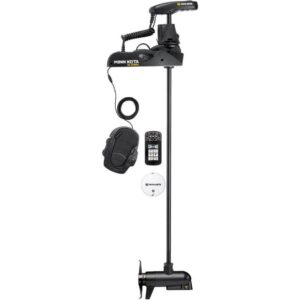
A look at today’s advanced trolling motors.
Gone are the days of steering with your knee at the boat’s bow or sitting with your fishing pole in one hand and the trolling motor’s tiller in the other. Today’s trolling motors are almost like having a second captain onboard, taking you exactly to where you want to go and allowing you to concentrate on getting that lure in just the right spot.
Manufacturers such as Motorguide, Minn Kota, Rhodan, Power Pole, Garmin and Lowrance all make trolling motors that will make your days fishing even more enjoyable and productive. If you are shopping for a trolling motor, there are a few things to consider.
Power match
Matching the power of the trolling motor to your particular boat is extremely important. The more power or thrust the trolling motor has, the larger the battery bank you need to drive it. The 12V systems typically in the 50-pound thrust category only require a single battery, whereas those in the 80-pound thrust range require a 24V system, and those in the 100-plus-pound thrust category require a 36V system.
With the advent of lithium batteries, there are now single-battery options in 24V and 36V. They are a great option for reducing weight and wiring complications, but they can be quite expensive. While most trolling motors are voltage-specific, some such as Power Poles’ new MOVE and MOVE ZR trolling motors are both 24V- and 36V-capable.
You also want to ensure your trolling motor’s shaft length is sufficient to keep the propeller in the water, even in choppy conditions where the bow may be rising and falling (for bow-mounted trolling motors).
Drop anchor
Next, consider the technology you want in your trolling motor. One of the most popular features of trolling motors these days is the spot lock or spot anchor feature. This utilizes a GPS and heading sensor, allowing the bow-mounted trolling motor to keep the boat in a specific spot, acting like a virtual anchor. This feature alone has increased the popularity of having a new trolling motor onboard and explains why you can now see trolling motors not only on smaller fishing boats but also on the bows of some large multi-engine center consoles.
The advantages of this feature are obvious while fishing and are worth the added cost. This virtual anchor works well, even in windy conditions and in current. The GPS constantly updates the motor, automatically adjusting thrust and direction to keep you in position. Many consider this a must-have, and some only have a trolling motor for this purpose.
Autopilot
Some modern trolling motors also include features similar to autopilot. These include heading automatically to a selected waypoint, running a pre-determined route, and even following a specific depth range. When combined with the right chartplotter, some models even have the ability to approach a waypoint and stay a certain distance from it in anchor lock mode so as not to spook fish that may be on that structure.
These features are all accomplished by interfacing with onboard chartplotters and relaying information from the display to the trolling motor. Some models will work better and interface easier with certain manufacturers’ displays. Utilizing a Lowrance Ghost trolling motor with Lowrance chartplotters and fish finders or a Garmin Force trolling motor with Garmin displays will interface and share features potentially easier than mixing brands. That is not to say that connecting a Motorguide or a Minn Kota Ulterra or Terrova to any brand of display that will interface doesn’t produce more than satisfactory results. They are designed and built to work well with all NMEA 2000-compatible displays. The key is to look for a motor that can accomplish what you want while interfacing with the displays you have onboard.
Wireless control
Many of these newer trolling motors have wireless controllers and high-tech foot controllers. These can come in the form of wireless fobs that can be worn on a lanyard and even wireless foot controls. Some foot controls, such as the Lowrance Ghost, have programmable buttons for features such as anchor lock. Some of the new Power Pole Move trolling motors even come with wireless foot control switches separate from the standard foot controller and allow placement anywhere onboard. If you are moving up from a cable-controlled foot control, the models from Garmin, Lowrance and Power Pole have all been engineered to have a feel and responsiveness similar to cable controls, creating a shallow learning curve.





